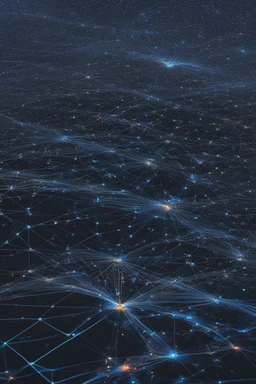![Placeholder: an image with mathematical surfaces in the background, is warm colours, and on the foreground stochastic trajectories in yellow, with a blinking point at their extremes, maths formula in foreground with a bokeh effect [new tools and workflows for optimal execution]](https://img.stablecog.com/insecure/64w/aHR0cHM6Ly9iLnN0YWJsZWNvZy5jb20vZDNhNzMwMjYtMWMzZi00ZDRmLTgwNDMtNTQ3MmRjMGVhYWIzLmpwZWc.webp)
![an image with mathematical surfaces in the background, is warm colours, and on the foreground stochastic trajectories in yellow, with a blinking point at their extremes, maths formula in foreground with a bokeh effect [new tools and workflows for optimal execution]](https://img.stablecog.com/insecure/1920w/aHR0cHM6Ly9iLnN0YWJsZWNvZy5jb20vZDNhNzMwMjYtMWMzZi00ZDRmLTgwNDMtNTQ3MmRjMGVhYWIzLmpwZWc.webp)
@generalpha
Prompt
an image with mathematical surfaces in the background, is warm colours, and on the foreground stochastic trajectories in yellow, with a blinking point at their extremes, maths formula in foreground with a bokeh effect [new tools and workflows for optimal execution]
distorted image, malformed body, malformed fingers
2 months ago
Model
SSD-1B
Guidance Scale
7
Dimensions
1280 × 720

![[Tilt-Shift Photography] The circuit board swam into soft focus through the lens, minute details piercing the blurred foreground and background. Golden traces connected components in miniature precision, fibers stretching taut as fairy-line across the substrate. Silicon chips clustered in pleasing arrangement, circuit diagrams etched upon them in intricate patterns too fine for the eye. Mushrooms colonized arrays with pin-prick precision, capped polypores blurring sockets packed with solder ball](https://img.stablecog.com/insecure/256w/aHR0cHM6Ly9iLnN0YWJsZWNvZy5jb20vMGEzODZmYTAtYzg5NC00MTZhLTgzMmUtYWQyYTI3MDUyNGNiLmpwZWc.webp)


![[Tilt-Shift Photography] The circuit board swam into soft focus through the lens, minute details piercing the blurred foreground and background. Golden traces connected components in miniature precision, fibers stretching taut as fairy-line across the substrate. Silicon chips clustered in pleasing arrangement, circuit diagrams etched upon them in intricate patterns too fine for the eye. Mushrooms colonized arrays with pin-prick precision, capped polypores blurring sockets packed with solder ball](https://img.stablecog.com/insecure/256w/aHR0cHM6Ly9iLnN0YWJsZWNvZy5jb20vYzg5Y2U5NTktZTEyYi00YzdmLTgwNDctZDg2ZGViNDI4MWI1LmpwZWc.webp)
![[Tilt-Shift Photography] The circuit board swam into soft focus through the lens, minute details piercing the blurred foreground and background. Golden traces connected components in miniature precision, fibers stretching taut as fairy-line across the substrate. Silicon chips clustered in pleasing arrangement, circuit diagrams etched upon them in intricate patterns too fine for the eye. Mushrooms colonized arrays with pin-prick precision, capped polypores blurring sockets packed with solder ball](https://img.stablecog.com/insecure/256w/aHR0cHM6Ly9iLnN0YWJsZWNvZy5jb20vY2JmYWFhNjktOWIxYi00NTQ2LWJmOGQtY2U1NzdlNjQ2NjlmLmpwZWc.webp)

![[mahematics] In the context of universal approximation, two approaches can achieve similar results but with different parameter requirements. The overall system comprises data, architecture, and a loss function, interconnected by a learning procedure. Responsibilities within the system include acknowledging noisy or biased data, addressing the need for a large number of parameters in the architecture, and overcoming the principal-agent problem in the choice of the loss function.](https://img.stablecog.com/insecure/256w/aHR0cHM6Ly9iLnN0YWJsZWNvZy5jb20vNzE2NTdhMmYtNWI1Ny00MGM5LWFmMzgtODIxNTNjNDA5NmJiLmpwZWc.webp)
![[Tilt-Shift Photography] The circuit board swam into soft focus through the lens, minute details piercing the blurred foreground and background. Golden traces connected components in miniature precision, fibers stretching taut as fairy-line across the substrate. Silicon chips clustered in pleasing arrangement, circuit diagrams etched upon them in intricate patterns too fine for the eye. Mushrooms colonized arrays with pin-prick precision, capped polypores blurring sockets packed with solder ball](https://img.stablecog.com/insecure/256w/aHR0cHM6Ly9iLnN0YWJsZWNvZy5jb20vMWM5ODQ1MjEtMjVjNi00OWZmLWExNmUtODcyYzcxZjQ3YWExLmpwZWc.webp)

![[mahematics] In the context of universal approximation, two approaches can achieve similar results but with different parameter requirements. The overall system comprises data, architecture, and a loss function, interconnected by a learning procedure. Responsibilities within the system include acknowledging noisy or biased data, addressing the need for a large number of parameters in the architecture, and overcoming the principal-agent problem in the choice of the loss function.](https://img.stablecog.com/insecure/256w/aHR0cHM6Ly9iLnN0YWJsZWNvZy5jb20vZDJmYjgwZDgtMTQxZC00MmZiLTkwZTktODZmNWRkMzMyYjI2LmpwZWc.webp)
